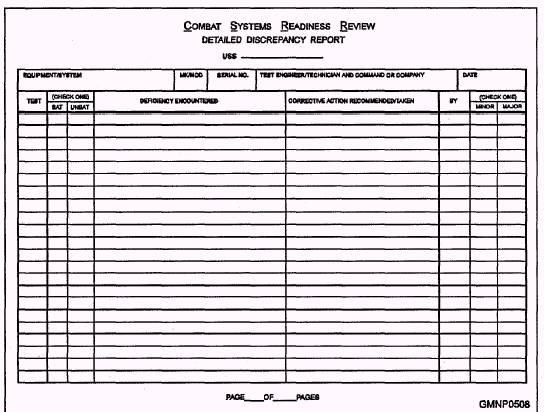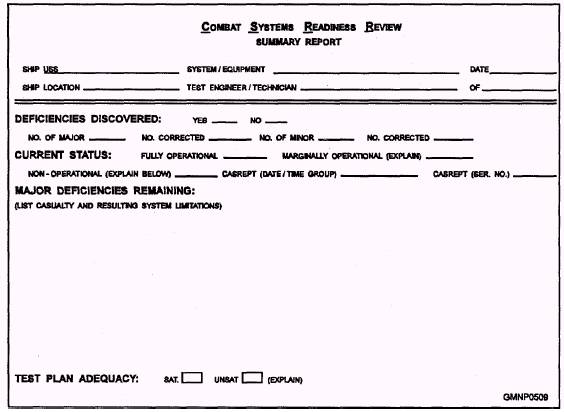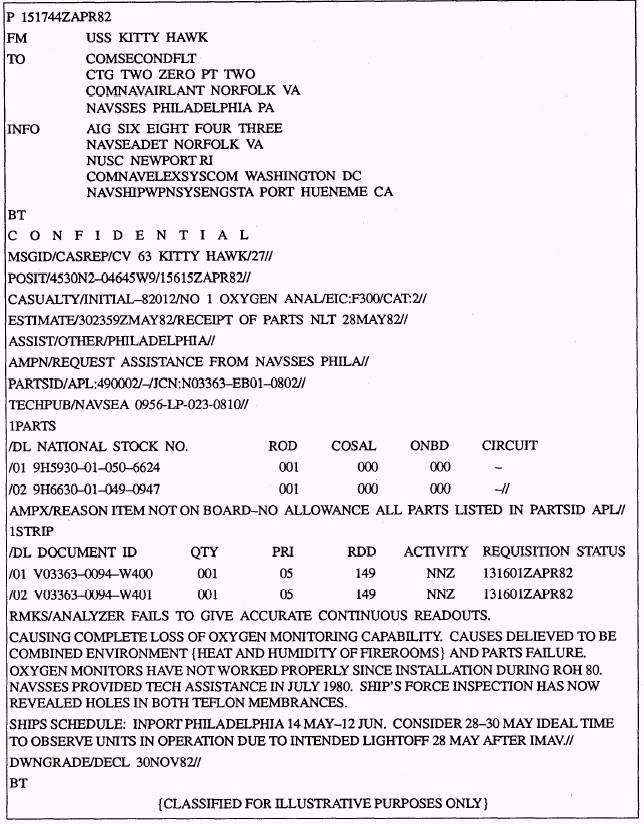|
CASUALTY REPORT (CASREP) SYSTEM LEARNING OBJECTIVES: Discuss and demonstrate a working knowledge of the casualty report system. As the LPO or LCPO, the number of systems and ancillary equipment you become involved with is going to increase. Because of such factors as lack of experienced personnel, lack of repair parts, or a need of technical assistance, equipment may remain inoperative or damaged for extended periods of time. To alleviate these situations, the Navy has developed a system of repining and monitoring equipment casualties. The casualty report (CASREP) system has been designed to support the Chief of Naval Operations and fleet commanders in the management of assigned forces. The effective use and support of Navy forces require an up-to-date, accurate operational status for each unit. An important part of operational status is casualty information. With this system, Navy managers are kept aware of when we need such things as repair parts or assistance to maintain maximum equipment efficiency. When casualties are reported, operational commanders and support personnel are alerted to the status of significant equipment malfunctions that may result in the degradation of a unit's readiness. The CASREP also reports the unit's need for technical assistance and/or replacement parts to correct the casualty. Once a CASREP is submitted, CNO, fleet commanders in chief (FLTCINCs), and the Ships Parts Control Center (SPCC) receive a hard copy of the message. Additionally, the CASREP message is automatically entered into the Navy Status of Forces
 Figure 13-3.-CSRR Detailed Discrepancy Report.
 Figure 13-4.-CSRR Summary Report. data base at each FLTCINC site, and follow-up messages are forwarded to the CNO database. As CASREPs are submitted, managers are able to monitor the current status of each outstanding casualty. Through the use of high-speed computers, managers are able to collect data concerning the history of malfunctions and effects on readiness. This data is essential to the maintenance and support of units dispersed throughout the world. Unit commanders should be aware that alerting seniors to their unit's operational limitations, brought about by equipment casualties, is important in expediting receipt of replacement parts and in obtaining technical assistance. Both of these functions of CASREP are necessary to provide the information needed in the realm of command and control of U.S. Navy Forces and to maintain the units in a truly combat ready status. Unit commanders should not delay or withhold reports to maintain the unit's readiness rating artificially at a higher than actual level. Support from every level, including intermediate and unit commanders, is essential to maintaining the highest level of combat readiness throughout the Navy. A "casualty" is defined as an equipment malfunction or deficiency that cannot be connected within 48 hours and falls into one or more of the following categories: 1. Reduce the unit's ability to perform a primary mission. 2. Reduce the unit's ability to perform a secondary mission (casualties affecting secondary mission areas are limited to Casualty Category 2). 3. Reduce a training command's ability to provide a major segment of its program and cannot be corrected relatively quickly by local action alone. TYPES OF CASREPS The CASREP system contains four different types of reports: INITIAL, UPDATE, CORRECT, and CANCEL. These reports of equipment casualties are submitted using a combination of two or more messages, depending on the situation and contributing factors. These four types of reports are described in the following paragraphs,
 Figure 13-5.-Example of an INITIAL CASREP message.
|

